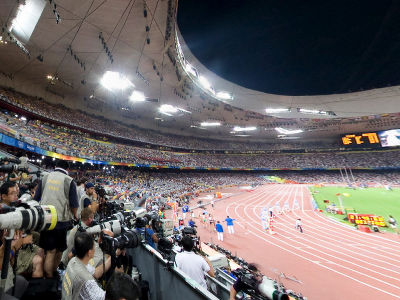I participated in the stadium tour of the National Stadium where demolition work begins in July 2014

Located in Kasumigaoka, TokyoNational Stadium,Tokyo Olympic Games in 1964In addition to being active as the main venue of this Tokyo Olympic Games in the stadium constructed in 1958 for the purpose of invitation, the 3 rd World Athletics Championship TournamentToyota Cup,National High School Football ChampionshipsIt has been heavily used as a venue for such as. But,2020 Tokyo Olympic GamesAt the time of the current national stadium alsoNew National StadiumIt has decided to be born again as a result, and soon the curtain will fall over more than half a century of history. So, I participated in a stadium tour that was able to enjoy the inside of the National Stadium and squint up, and I have burned my attention to the present state of the National Stadium.
Stadium Tour - SAYONARA National
http://www.jpnsport.go.jp/newstadium/tabid/414/Default.aspx

◆ To the National Stadium
The National Stadium is located in Kasumigaoka, Tokyo, the nearest station is the National Stadium Station of the Toei Oedo Line.
There is a Sendagaya gate just outside the station, but the day of the tour was closed and I could not enter.

When we are getting close, we discovered the North Gate of Japan Sports Promotion Center next to Sendagaya Gate. As this gate was open, I headed to the stadium from here.

The national stadium will appear pleasantly among the trees.

However, it is too big to come near, making it indistinguishable as to whether it is a national stadium or not. As it is walking for a while beside a track for track and field ......
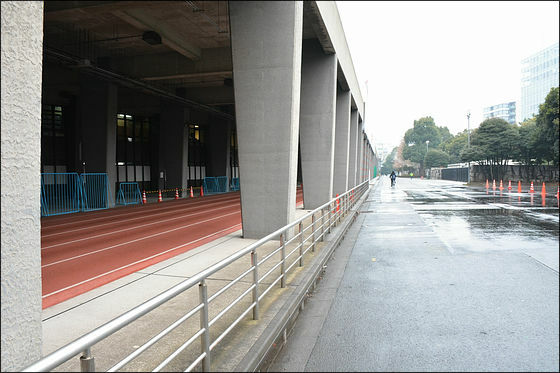
I found a signboard of "National Stadium Stadium Tour Reception".
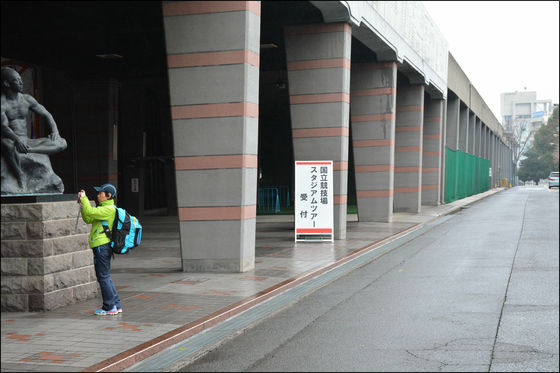
Apparently it seems that this was the entrance to the main gate of the National Stadium, so I immediately went inside and finished accepting the tour. Tour fee is 1,000 yen for adults, 500 yen for high school students and less, preschool children are free.
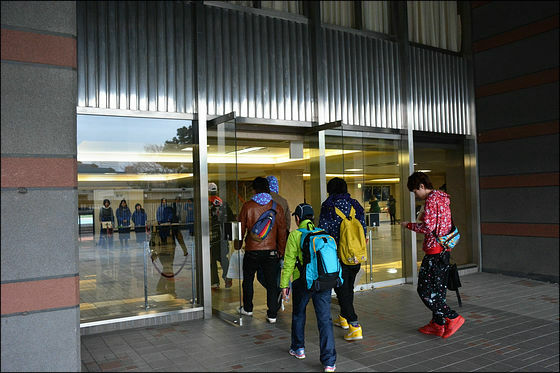
That's why I got a receptionist and got a tour pass and various things.
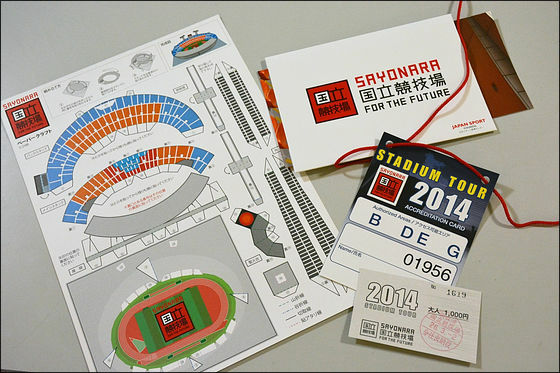
You will be taking a tour by hanging this tour pass from the neck.
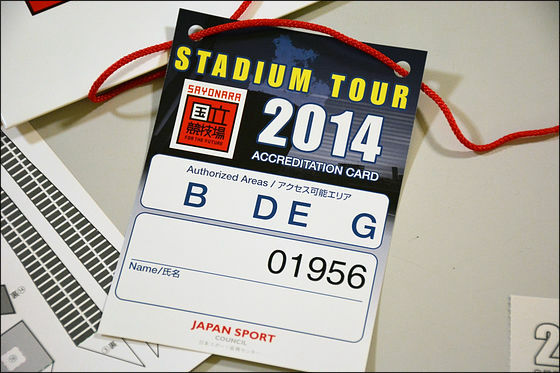
Until the start of the tour, you will be on standby in the lobby where there is a tour reception, but here are signed uniforms and spikes by Japanese national footballers, and balls autographed by former Japan coach Takefumi Okada ... ...
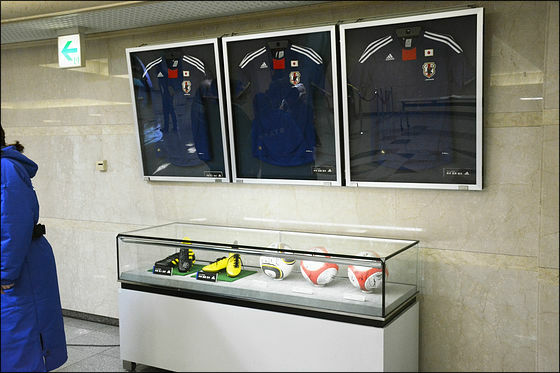
Recorded images at the time of the construction of the National Stadium are being flushed and it will entertain a little time until the tour starts.

When the tour start time comes, the clerk of the clerk in the blue jacket explains the precautions, etc. Once this is over, the start of the stadium tour tour starts.
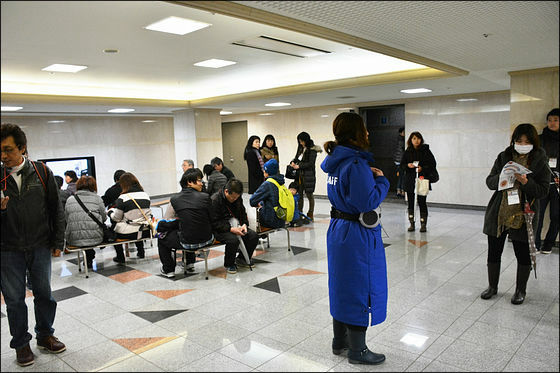
Move to tekoteko by your older sister who will guide me.
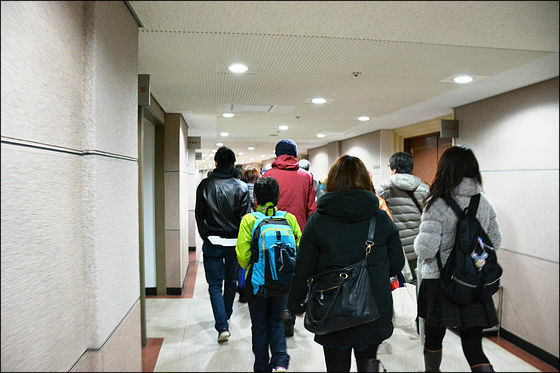
Since there are many seats and gates for entrance and exit inside the National Stadium, it is difficult to understand what is where, but the positional relationship between the seats and gates is like this.

Winner Nameplate
So the first thing I came was the main gate near the Yoyogi gate. Here, the winner name board of the 3rd World Athletics Championships tournament held in Tokyo in 1991 is established. The nameplate of the player who won the tournament was engraved on this nameplate, and the name of Carl Ruiz of the United States who won by winning the world record of the time at a male 100 meter run was also an ant.

The moment that Karl Lewis blows out the world record, you can see it in the following movie.
World Record - 100 m Men Final Tokyo 1991 - YouTube
At the 3rd World Athletics Championships, a world record of a long jump 8 meters and 95 centimeters was born, but major was placed so that you can see how great this big record is. There was a marvelous voice leaked from tour participants, "Did you fly this one step? ...".

This world record is marked by Mike Powell of America who battled with Karl Lewis in the long jump finals and remains the world record as of 2014.
World Record - Long Jump Men Final Tokyo 1991 - YouTube
Then I came back to the front gate where I received the tour. The upper part of this main gate was the nameplate of the winner of the Tokyo Olympic Games in 1964.
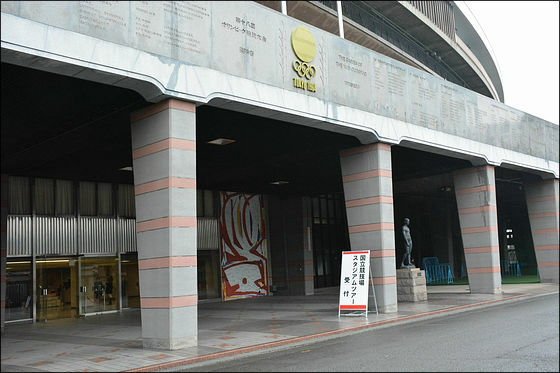
If you look closely well you can surely check the name of the competition and the name of the winner.
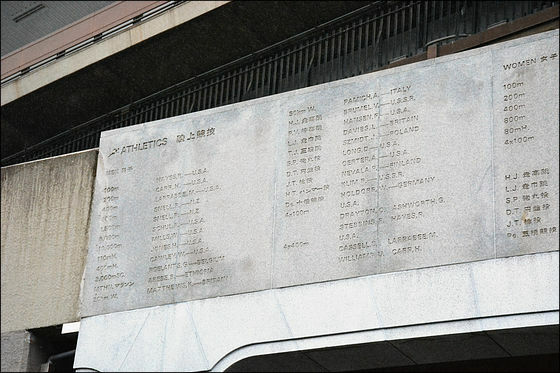
Main stand
Then move to the stadium ... ...
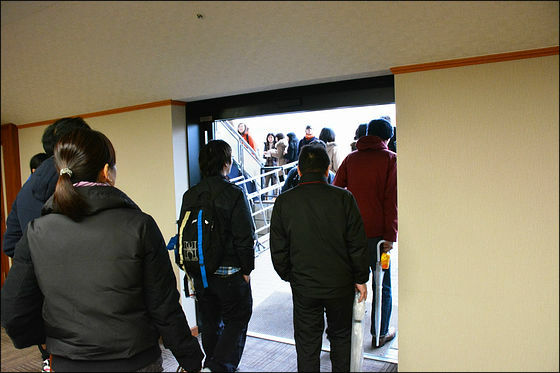
It is the VIP seat zone of the National Stadium that came. This is located in the center of the main stand during the 4th and 5th gate of the stadium.
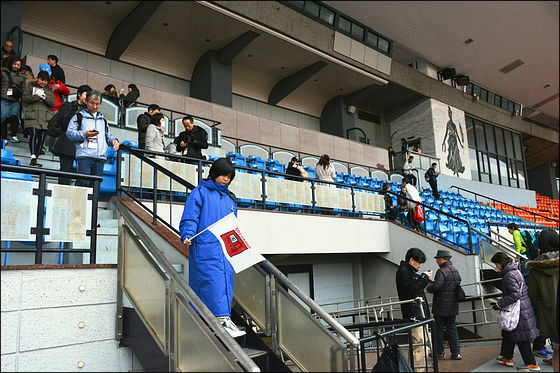
The VIP seat is on the 3rd floor of the National Stadium Main Stand side, and looking at the ground from here is like this.
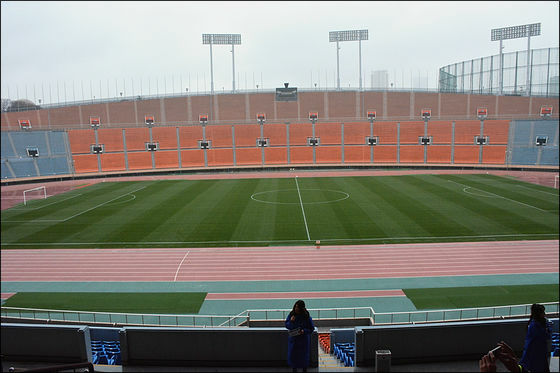
You can see the electric bulletin board, the left and right land trucks, the stand part, and it seems to be a perfect seat for watching sports.
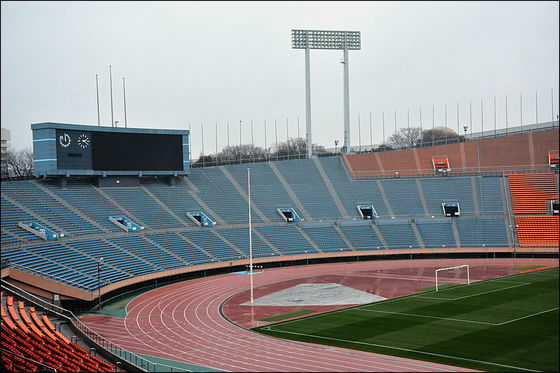

By the way, the seat of the VIP seat is like this and there is not much VIP feeling.

Since the roof is also attached to this main stand side, you can enjoy sports watching etc. without getting wet even on rainy days.
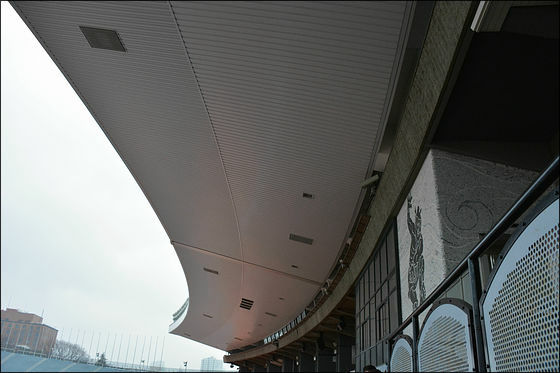
Anyway, a good view.
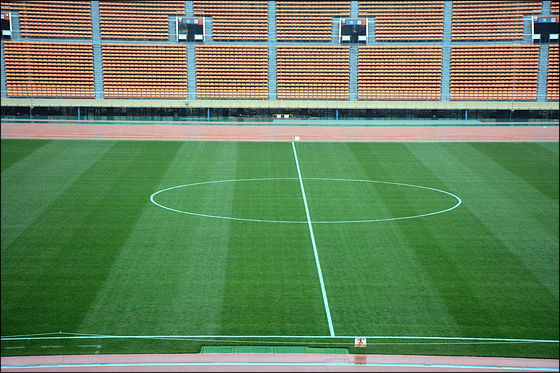
It is in the middle of the ground so you can see the goals on both sides well.
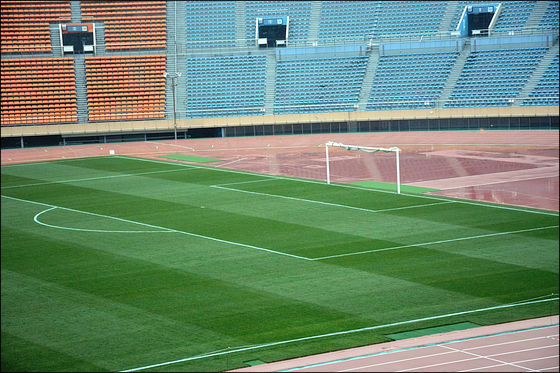
In this VIP seat zone, using the winning prize board etc.A scene like thisYou can also take a picture by managing.

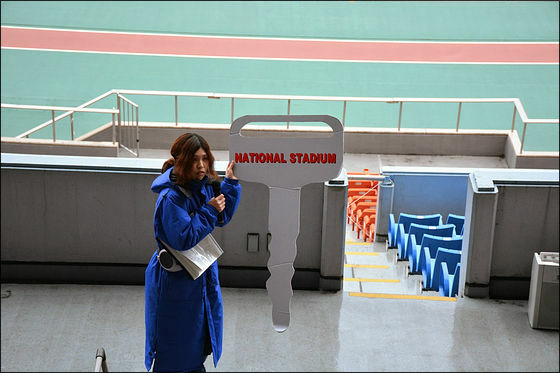
There is a Royal seat on this VIP seat, and this seat is a seat that the Imperial Family uses when watching sports. It seems to be fluffy, but on the day it is covered with a seat and can not be seen.

Besides, there is a staircase descending to the second floor just on the side of the VIP seat ......
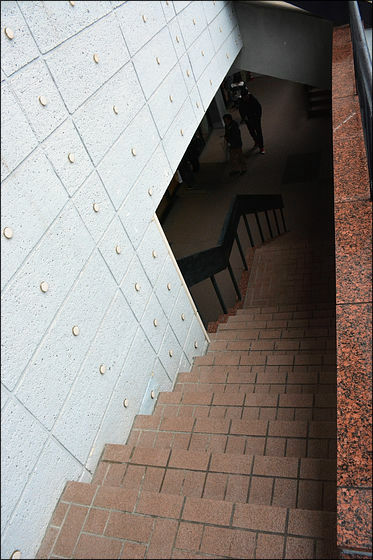
Before that there is a noble guest seat which is a room for the guests 'guests' guests. Because this riding seat was inside the stadium, I could not see the state of the ground directly, there was a big television set for watching.
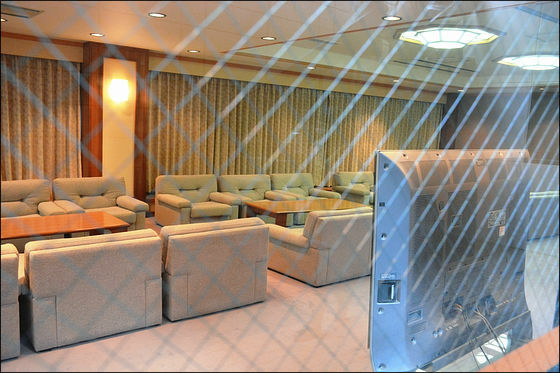
The seat on the main stand spreading like enclosing the VIP seat from the left and right seems like this and these sheets near the gates 1 to 8 have a roof so you can spend comfortably on other rainy days even on rainy days.
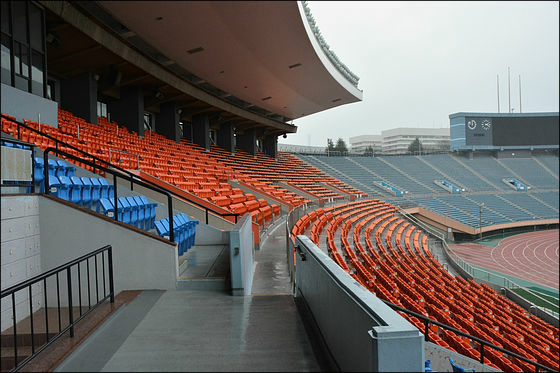
The seats near the gates 3 to 6 look like this.
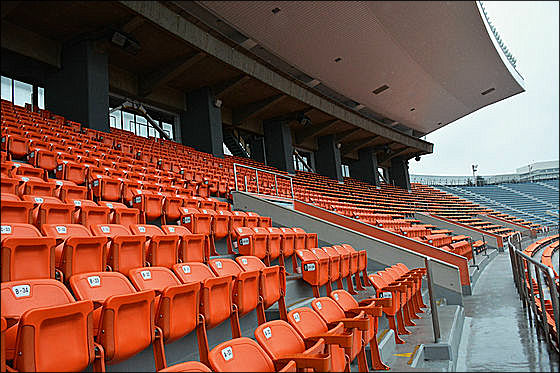
The seat here has a backrest and you can sit on a thing resembling a VIP seat.
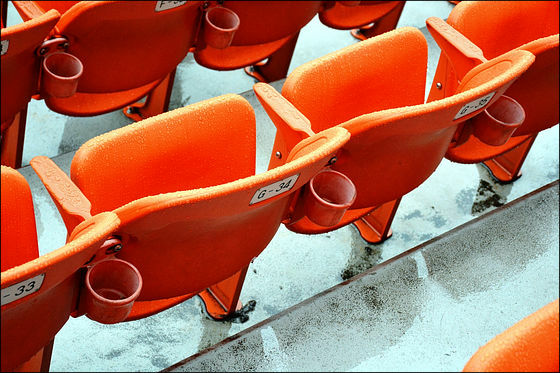
The seats near gates 1 and 2 and 7 and 8 are like this, there are few backrests.

Looking at the stadium in the front row near the 1st gate is like this. The distance to the ground and the track is very close, it seems to be able to enjoy the presence.
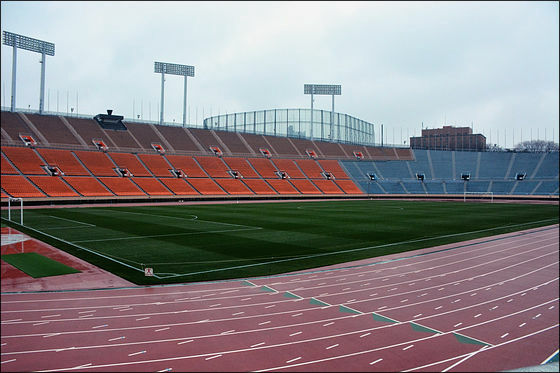
It's like this when in the middle stage.
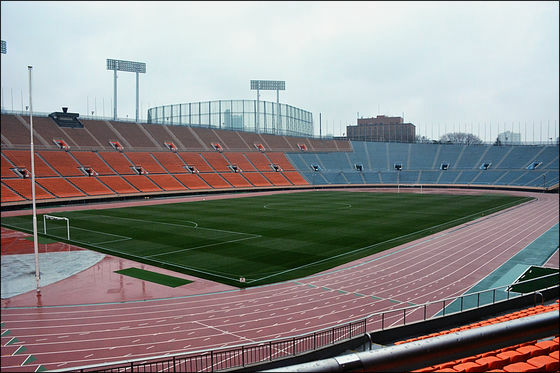
Furthermore, looking at the ground from the seat behind No. 1 is like this. The higher the position of the seat, the easier it is to see the whole stadium.
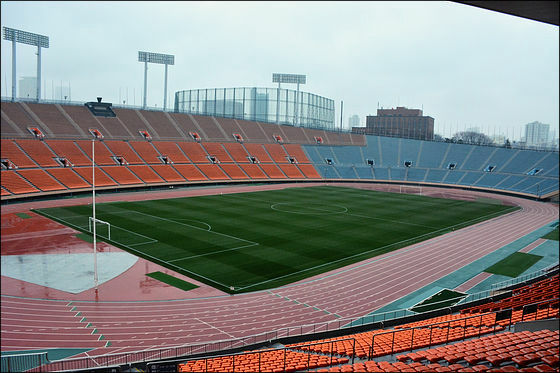
The alphabet was attached to the stairs, so it became easier for me to understand where my seat was.
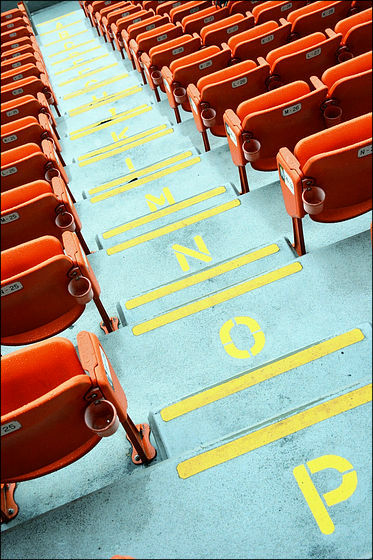
Besides, the press room is also near the 6th gate on the main stand side. There is a desk only in this press seat.
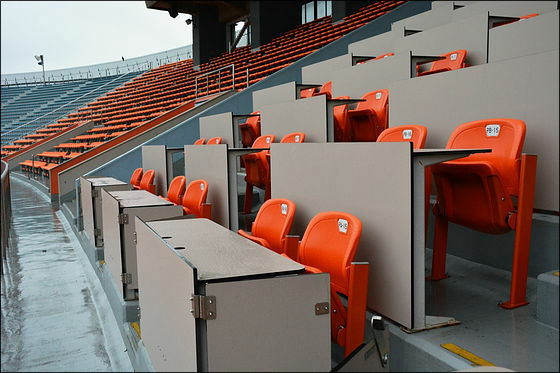
The view from the 8th gate side looks like this.
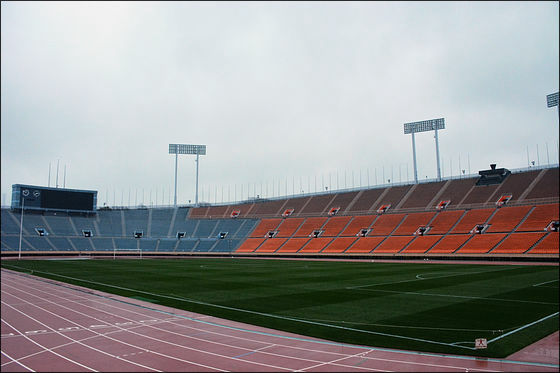
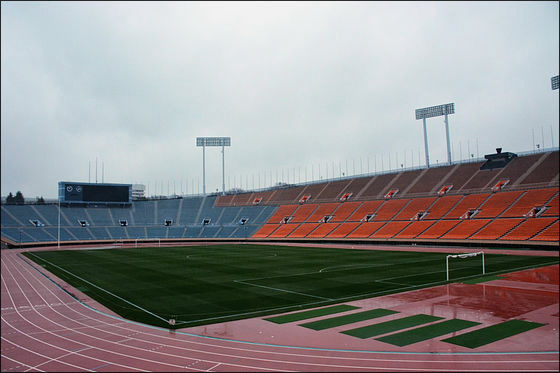

◆ Indoor driving range
Next to the main stand I came to the indoor driving range. At football and rugby matches, players are supposed to go out to the ground after upgrading here.
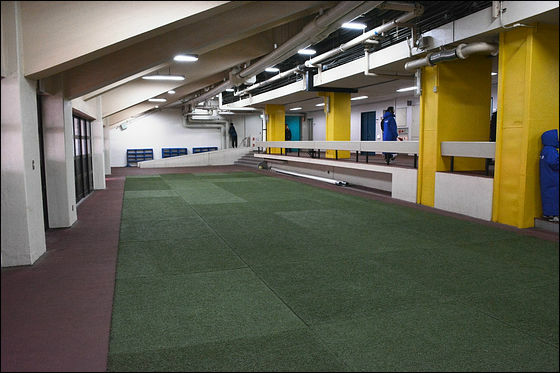
When a competitor enters or exits a soccer match or the like, he goes in and out of here.
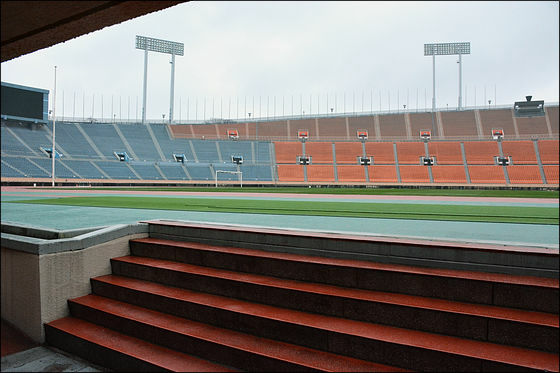
Opportunities to see the ground from such height should not be so.
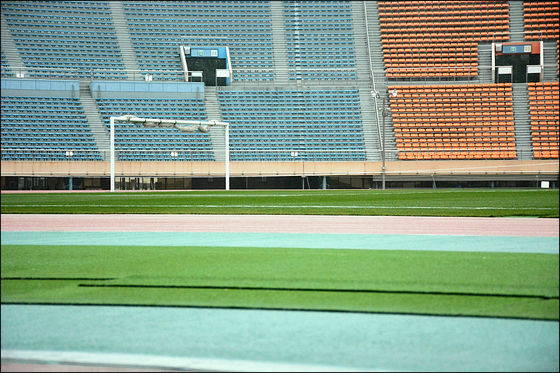
◆ changing rooms
I was also able to enter the change room used by the players.

Inside is like this.
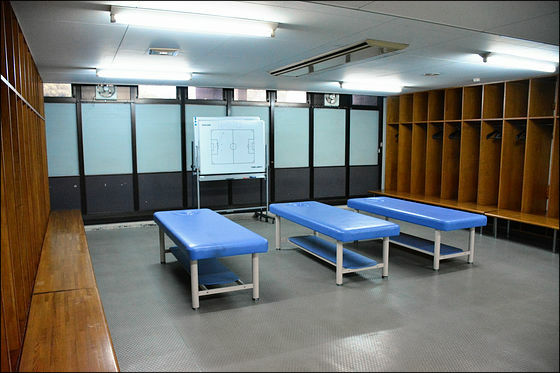
This is a massage bed.
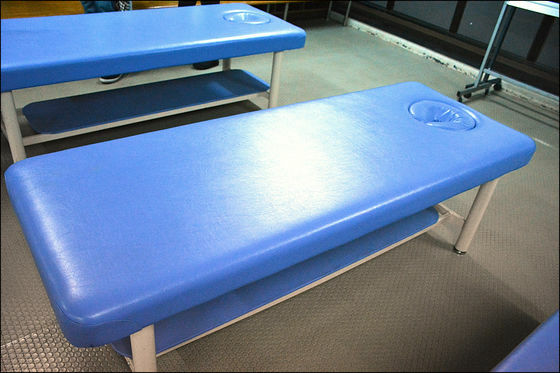
Is there an instruction on tactics on this board at half time?
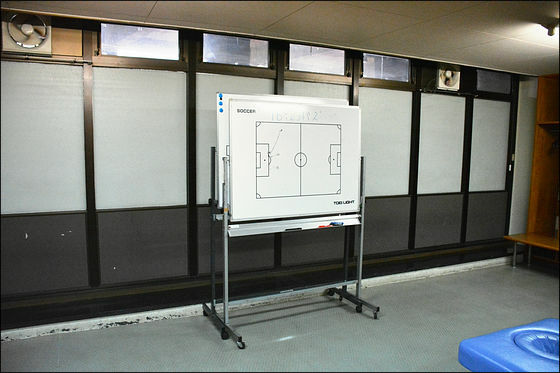
And the locker looks like this. The interior of the changing room was a very plain image.
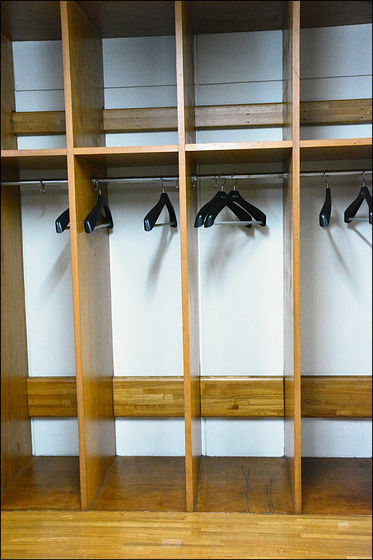
There is also a shower room in the change room.
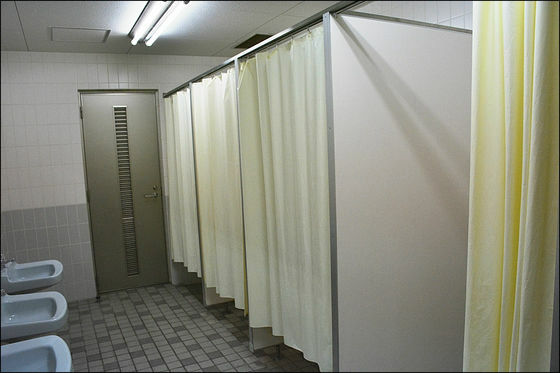
The passage in front of the changing room is like this. It seems like I can not feel like the athletes who decided to play the game just before.
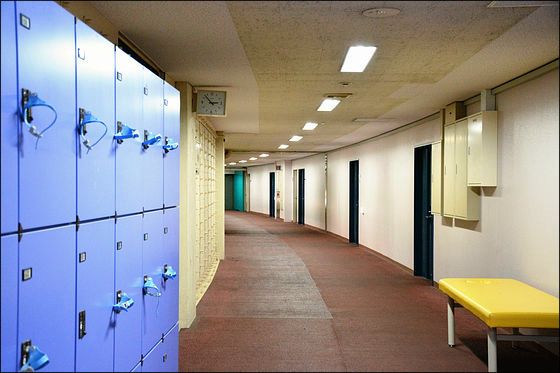
And this passage is ...
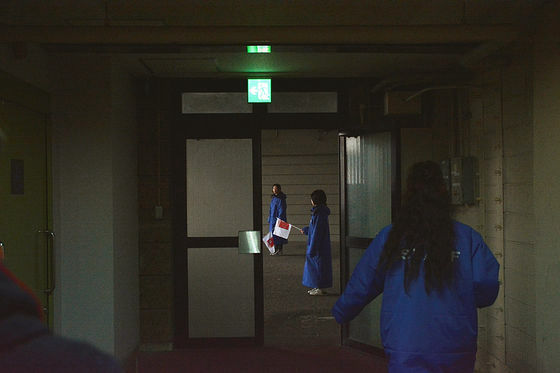
It was connected to the entrance exclusively for stakeholders near Gate 1.
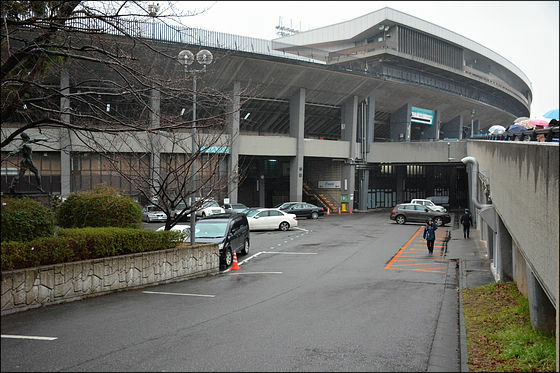
◆ Back stand
Once I went outside, I will continue to turn around from the outside of the stadium to the back stand side.
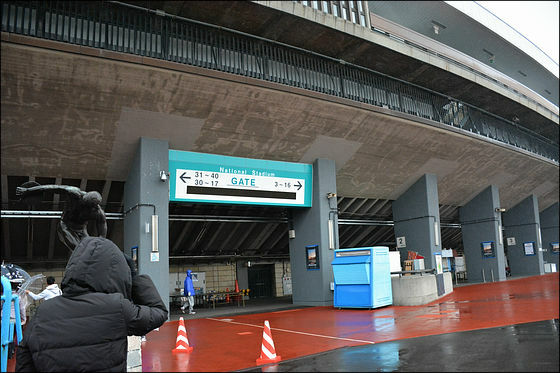
Since this gate is around the second floor in the stadium, you can see a different national stadium that is different from when you first came to the stadium.

Moving a passage in ... ...
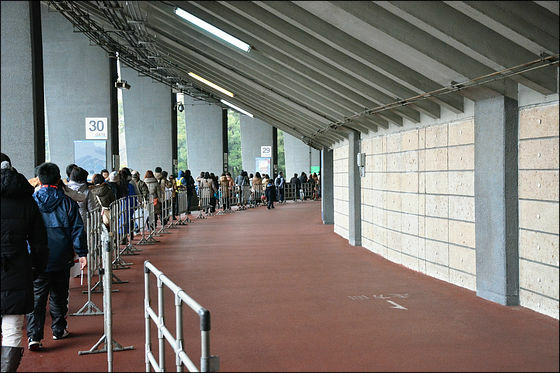
It is possible to enter the stadium from these gates, but now I am aiming for the backstand side so I will thru and hurry ahead.
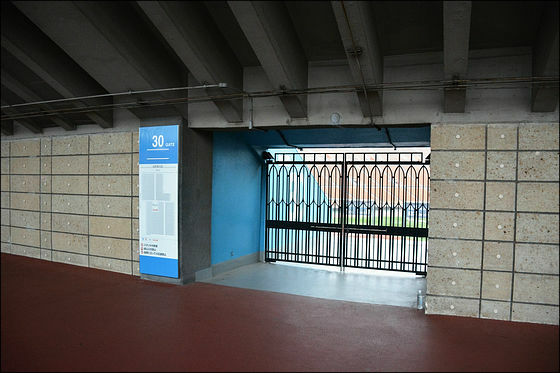
Then, from the stairs on the side of the north stand where the bulletin board is located, aim at the seats near the gates 31 to 40 in the upper stage of the back stand.

The passage with the gate to the upper stage of the back stand is like this, the ceiling is higher than the other passage.
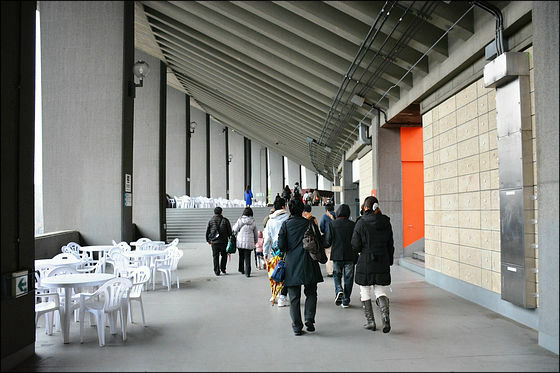
Finally arrived at the upper stage of the back stand. From here the ground looks like this.
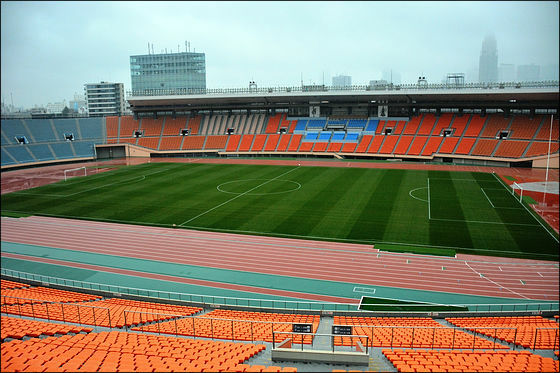
Looking from a higher position this way.
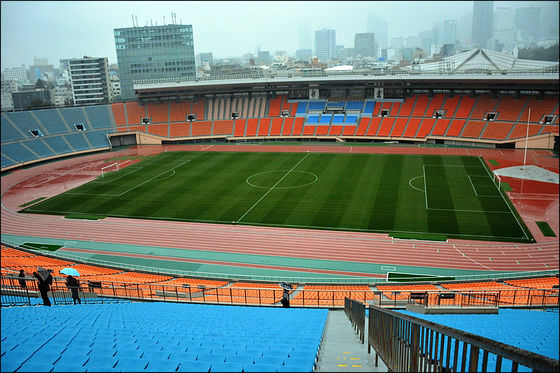
The seat in the upper stage of this backstand is like this.
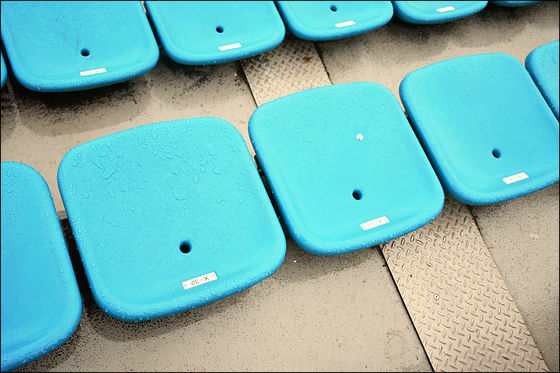
The main stand is visible in the front, and the blue sheet part in the middle is the VIP seat zone that we used to be.

This is the view from the top of the back stand. It is quite expensive, on rainy days it is going to be serious if you do not pay attention to your feet.
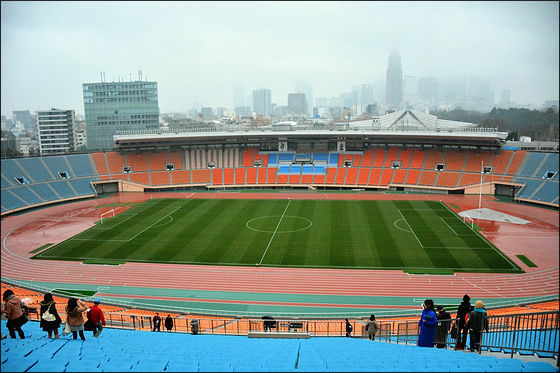
The rows of seats spreading to the left and right are supposed to be amazing.
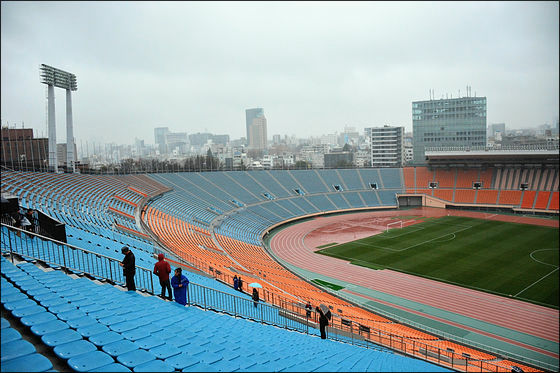
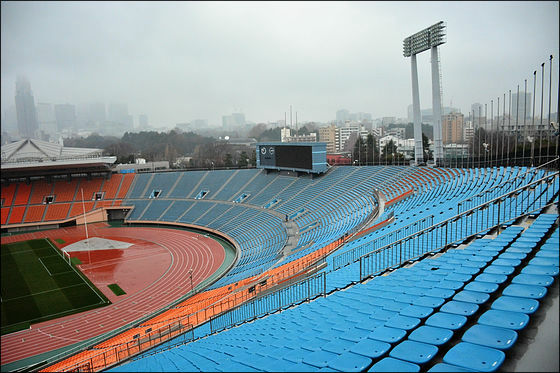
◆ Flame Tower
I will go to see this because the torch stand is installed in the center of the upper stage of this back stand.
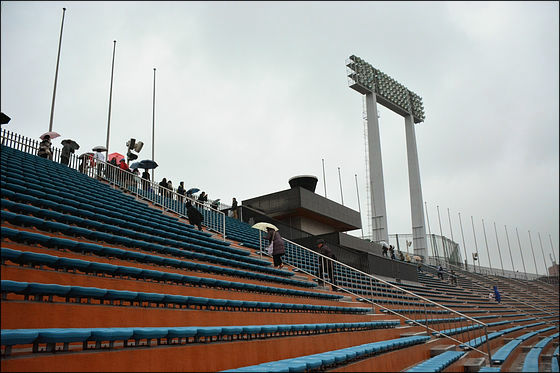
Looking at the torch table from directly below it is like this.

From the top row.

On the day there was no fire, but this is the Otani.
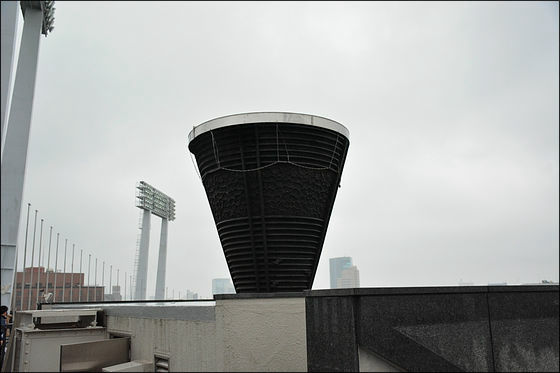
◆ North Stand
And the last one to come is a north stand with a light bulletin board. The seats near the gates 24 to 30 correspond to the north stand, and supporters on the home side are supposed to crowd around here in the soccer game.
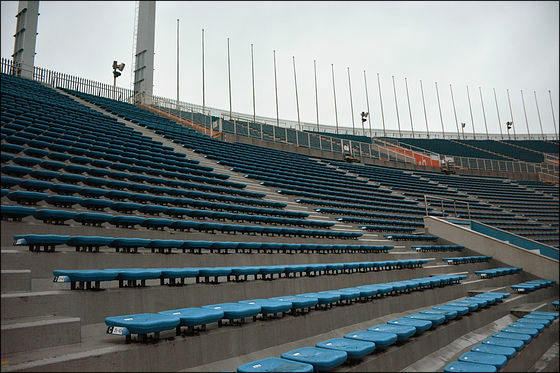
Looking at the ground from here is like this. The landscape spreads completely different from the main stand and the back stand, and the track on the opposite side can hardly be seen.
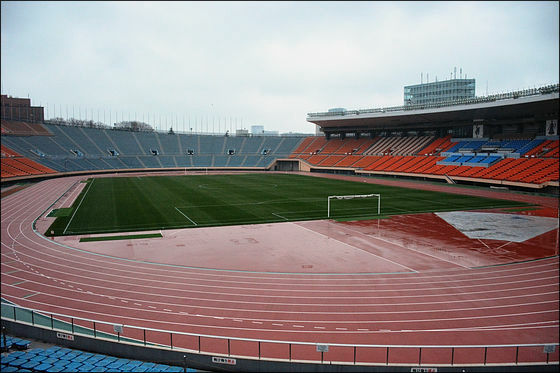
Electric bulletin board can be enjoyed with great power.

The left and right stands were like "spreading out" rather than "spreading sideways".
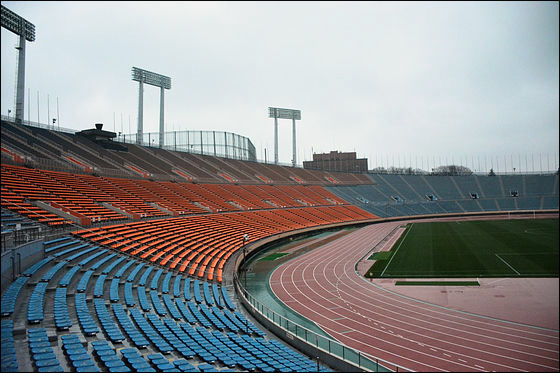
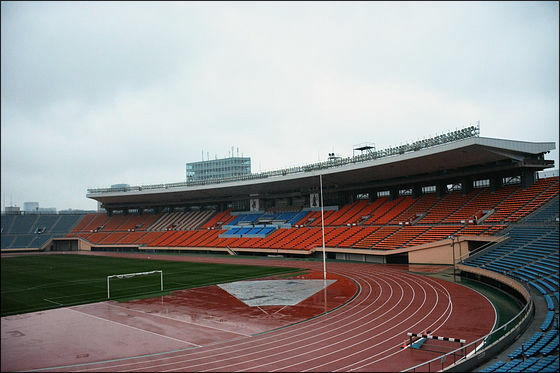
◆ Chichibu Memorial Sports Museum
After the tour you can also present a ticket ticket to enter the Chichibu Memorial Sports Museum for free.
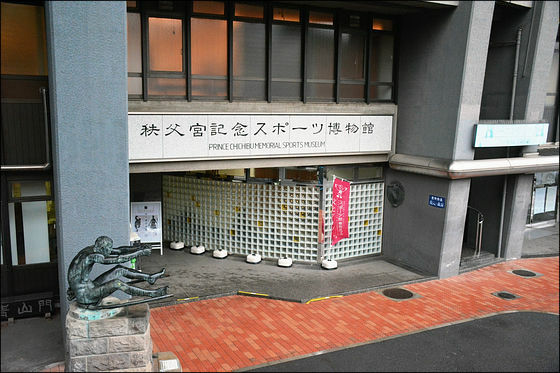
Here are the posters of the conventions held at the National Stadium in the past ... ...
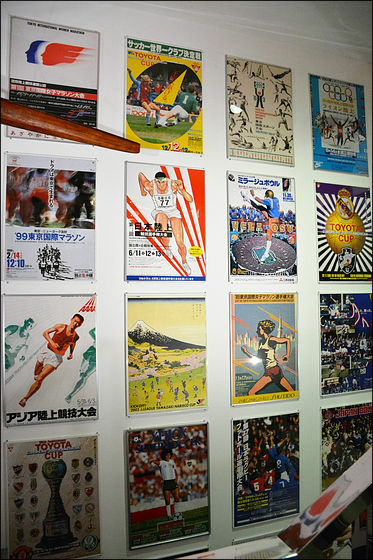
A quiz such as "Why does the fridge burn?"
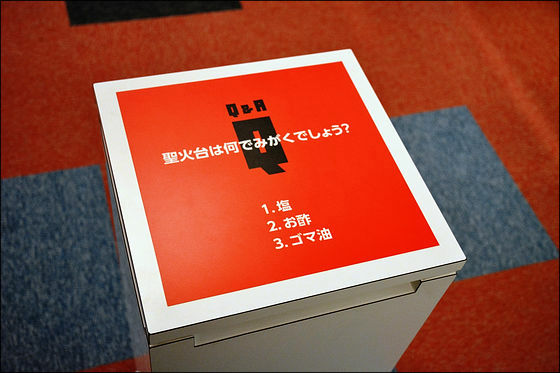
Furthermore, "Starting point when Carl Lewis issued world record" etc. are displayed, and you can see and touch various past records.

Even if you take a commemorative photo by actually deciding the pose of the crowning start when this curl Lewis issued the world record, it is OK.

Other than that, Japan's oldest table tennis racket and rule book ......
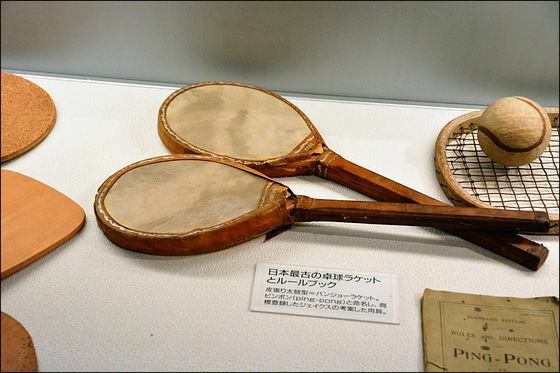
Historical materials such as construction drawing of the current national stadium are also abundantly exhibited.

There was also an image movie of the New National Stadium.

As the dismantling work of the current national stadium begins in July of 2014, it is also ants that you participate in the tour and burn up the appearance of the National Stadium in the meantime.
Related Posts:




